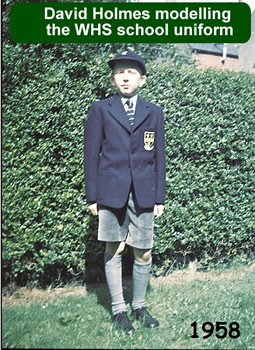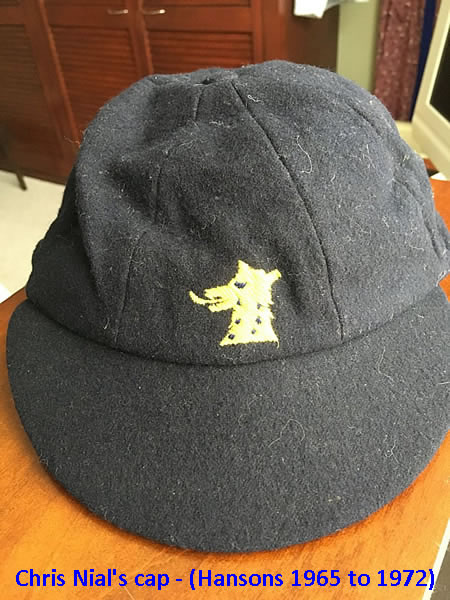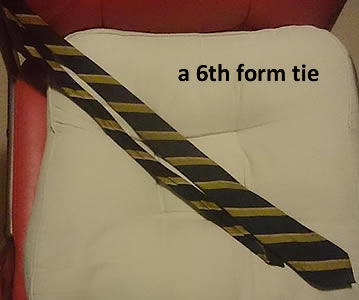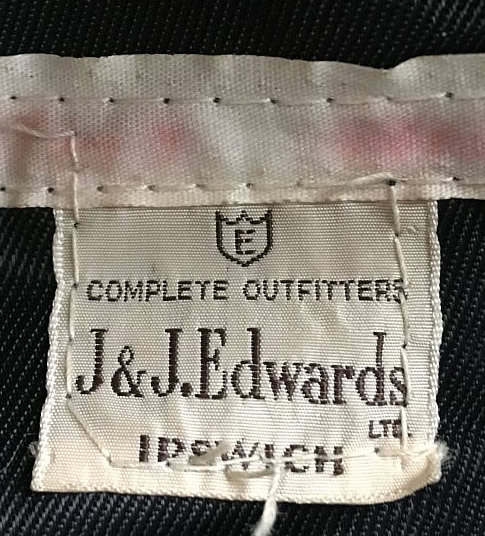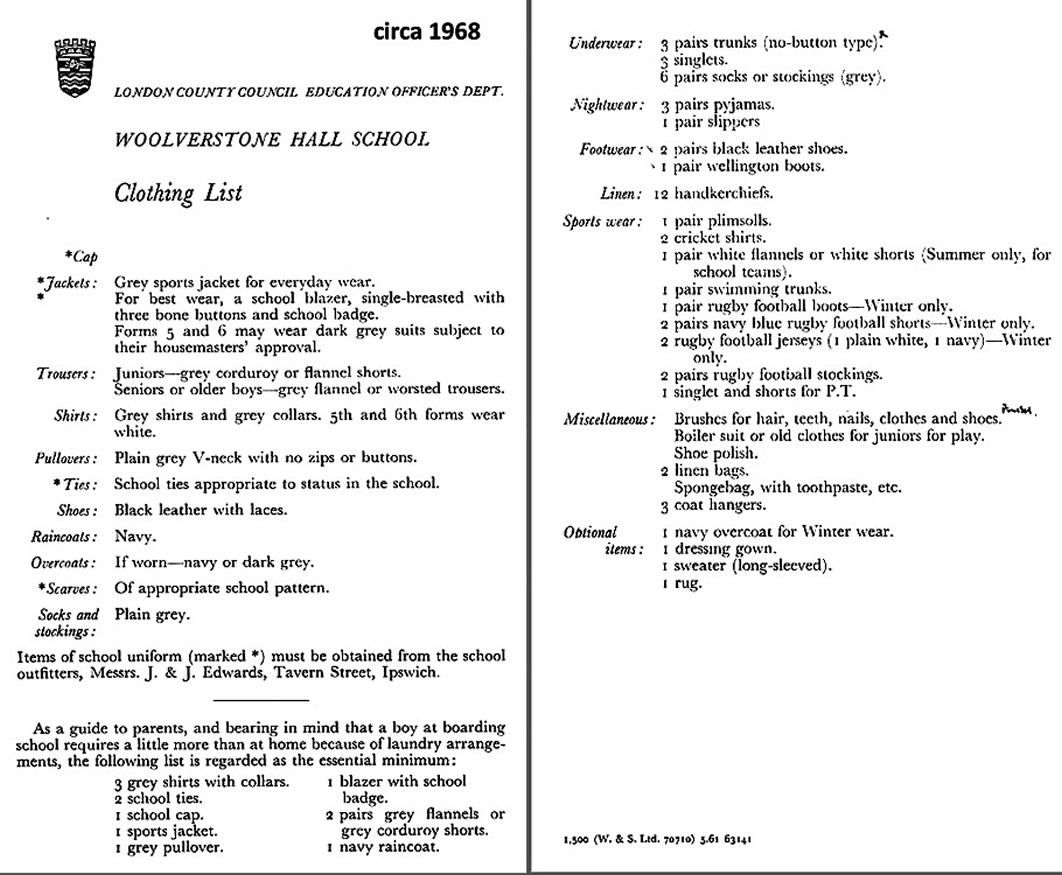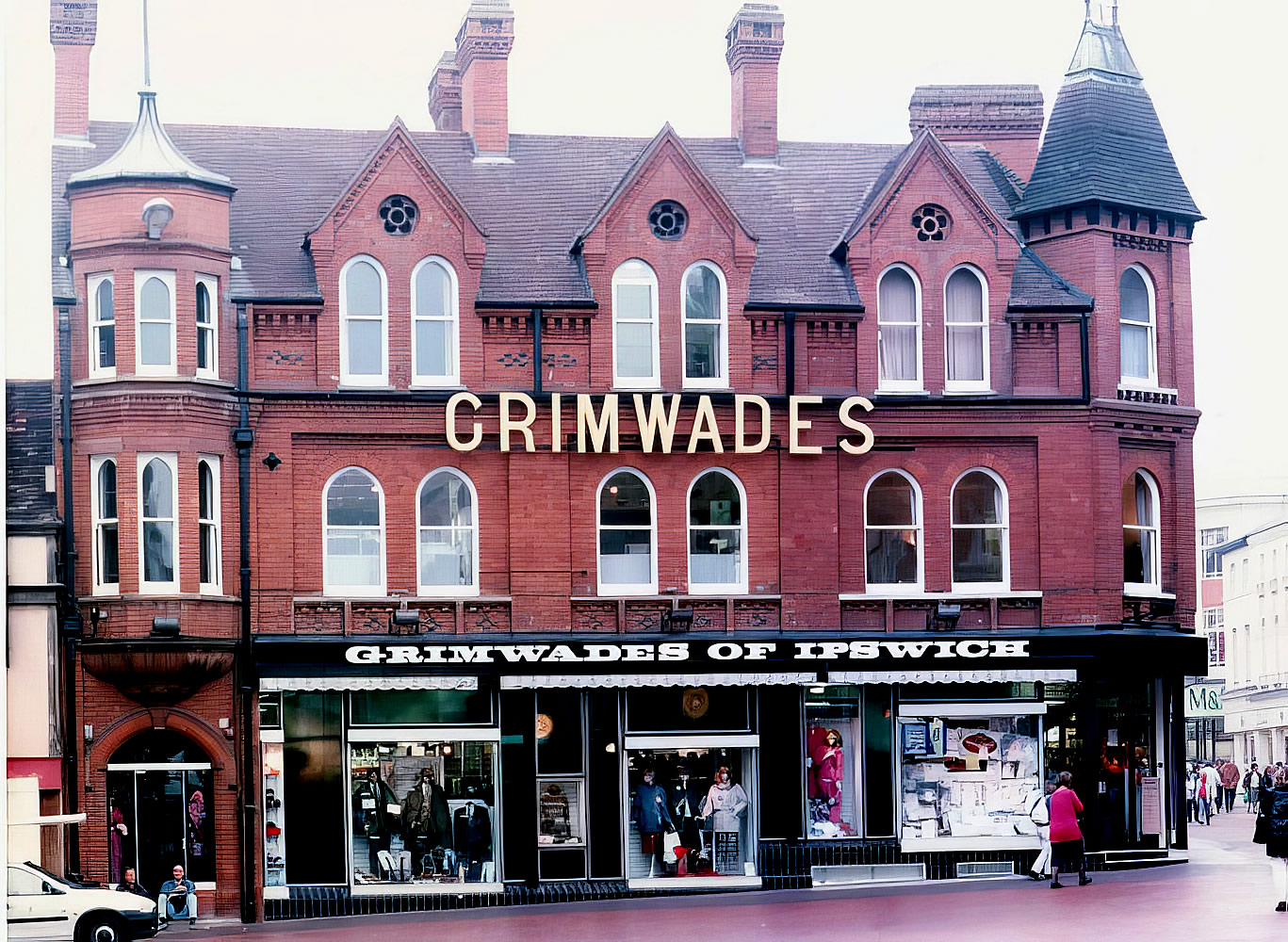| School Uniform |
The "Burghley Boys" arriving in 1957 - including an obvious anarchist on the left! |
 |
Jon Kemp - Corners 73-80: The 72 intake were the first not to have to wear caps. My intake, 73, were the first intake not to have to wear short trousers.
John Dawlings - Owell 64-7: I was part of the 64 intake and didn't have to wear caps. Short trousers and Latin yes.
David Waterhouse - Corners 58-6: Shorts might have been the norm for younger boys, but I'm not sure they were ever compulsory. The attached picture is of the five of us who joined the class of 57 in 1958, so we we were second-formers: only three are wearing shorts. If you look carefully you can just see my flannel-clad legs behind those of Eric Coates and Roger Young, the two in the middle. I was nearly six feet tall even then, and would have looked ridiculous in shorts.

Thomas Newsham - Johnstons 54-59: you are right! I was just under 6' and about 11 stone when I had to go back into shorts as my trousers weren't available and I did look and feel ridiculous. It didn't help that they were too small thus very tight.
John Dawlings - Owell 64-71: From 64-71, while I was at school, I am sure it was shorts on the first two years.
And wasn't there something about grey shirts and white shirts? Maybe grey shirts for the first 5 years?
Gerry Warren - Berners 65-72: Shorts were required for years 1 & 2 when I started; some of the lads who outgrew theirs were allowed to dispense with shorts and go on to long trousers in the 2nd form. As I recall caps were optional, we wore grey shirts and socks and had a grey Harris tweed jacket for everyday wear and blazers for Sunday service and to go off the school grounds. We wore the grey shirt until the end of the 4th form, the 5th were in white shirts and the 6th could wear any shirt they liked. Ties were a knitted blue with horizontal yellow stripes for 1st and 2nd forms, blue with a diagonal yellow stripe for the 3rd and 4th and plain blue for 5th and 6th. I think those with colours and prefects had a tie with the wolf's head on it.
Jon Kemp - Corners 73-80: When I was in the fourth year, the Harris tweed jackets became optional and WH sweatshirts were allowed to be worn.
Chris Snuggs - Berners/Halls 58:65: Uniform is a fascinating subject. I often wondered whether anyone ever wrote a successful PhD thesis on its psychology and social effects. What exactly is the rationale? To look like little soldiers? To be exclusive? To be posh? To identify boys'origin when out and about? (WHY exactly?) It is a relic of public school days, and I suppose WHS was a kind of public school in all but name, but I am coloured in this by having worked abroad. They don't have uniforms in Germany or France, and I don't notice their schools or kids being any the worse for it.
And uniform is such a practical pain: always aggro with and from teachers about whether x or y is acceptable; parents (especially Mums) worrying about getting the right clobber. And kids in uniform cannot express themselves by clothes as they can do once adults. WHY don't we allow them the freedom to wear what they want within an agreed framework of decency?
I believe the argument once was that obliging everyone to wear the same meant that social differences were smoothed over. A) That is long gone and B) WHY? WHY PRETEND that something is not what it IS? I am a fanatical believer in the total maximum of personal freedom that is compatible with other people's freedom, and the freedom of my mate to wear what he likes is a joy for me. The fact that he can afford expensive clobber and I am stuck with stuff from charity shops doesn't worry me. School should be about REALITY and TRUTH - pretending everyone is the same by forcing them to wear the same clobber seems to me ridiculous.
As I said, I am influenced by working abroad for long periods, including 3 years as a a full-time state-school teacher in German secondary schools. There was absolutely never, nunca, niet, nil and zilch problem with not having a common uniform. I just think it is a waste of time, money and aggro. For me it wasn't a problem at WHS - just a fact of life, but pointless nevertheless.
Thomas Newsham - Johnstons 54-59: I have always thought that it was similar to workers wearing, er, work clothes to protect everyday wear. Most boys if schooling in "civilian" clobber would have wrecked it in short order( certainly in my playground) and really given Mum something to create about. Another reason as with team strips one could, for whatever reason, be spotted a mile away. It is also a good "social leveller".
Chris Snuggs - Berners/Halls 58-65: I refer you to Germany - no uniforms, no problems, education respected the world over with many of the world's best technicians, academics and engineers! I am not personally in vast favour of "social levelling". which I associate with Stalin and Mao Tse-Tung! But it is an interesting topic because so controversial. Maybe it should have been decided by democracy? All parents of WHS boys could have voted! What would boys have voted if given the choice? What's interesting, too is that what seems to have been a fairly strict policy in the early years was gradually watered down ....... if unchecked, freedom has its own form of entropy!
Louis Parperis - Orwell 63-70: I can remember Bailey announcing in an assembly during my first year that caps no longer needed to be worn outside the school grounds (there was already no requirement to wear them inside the grounds), which I believe may have had something to do with Chris Webb who would have looked ludicrous wearing a silly little cap. First and second formers were required to wear shorts with a grey shirt and a junior school tie (navy background with horizontal gold bars), though a dispensation to wear long trousers was possible in exceptional circumstances (I can remember only three boys who were allowed to wear long trousers during my seven years: Forbes-Robertson, who was extremely tall; John Lewindon, also very tall and known as Jelly Legs; and Steve Hodgson, whose legs were so prematurely hairy that from a modest distance he seemed to be wearing black trousers when wearing shorts). Third and fourth forms wore long trousers, grey shirts and the middle school tie (navy background with a sloping gold band); fifth formers were allowed to wear suits and white shirts with a plain navy-blue tie and, by the time I was in the sixth form, we were allowed to wear coloured shirts. A staff meeting in the first week of the Autumn term in 1967 ruled that boys were not allowed to wear a Fez either during school hours or outside of the school grounds.
Chris Snuggs: "UNIFORM? If I think about uniform at WHS, I think that it wasn't much of an issue. We were told what to get; we got it; we wore it. I personally never had any problem or hassle with uniform. It wasn't like it has been in some day-schools in recent years: an endless fight with teachers over what was or wasn't "getawaywithable" - and the fashions of jewellery, tatoos or or nose-rings was way in the future. Others may have been more rebellious than me of course, or more desperate to set themselves apart with some personal uniform-tweaking, but that all passed me by.
Except on ONE occasion. In the 4th year I began to feel I was suffering from an image problem; too good, too anonymous, too submissive, and from somewhere I got hold of a raincoat. Now I do not remember what the regs said about raincoats. I certainly didn't have any kind of official one and I don't remember other boys wearing raincoats. In truth, one hardly ever NEEDED a raincoat anyway.
Well, I got this raincoat, which if truth be told was not really in the Peter Wyngarde/Jason King league It was more like something that Columbo would have rejected as too scruffy. No matter; it was different. I started wearing it around the school on vaguely rainy days, and nobody seemed to bother much, until one day Doc Thornbery stopped me as I was walking towards the main hall and said: "That's a very nice raincoat (an outright lie, in fact!!) but it isn't really regulation, is it?" or some such. What could I say? Nothing, and so that is what I said, apart from a vague mumbling. And he went on: "You'd better leave it in the dorm next time."
I was a bit irritated insofar as the Head had seen me in this thing and not commented, but I did not feel it diplomatic to point this out to Doc T! No, I wasn't one to defy Doc, or indeed anyone else much, so that was that: a brief spurt of individualisation that fizzled out before it had hardly got going.
The ONLY other issue I ever remember was feeling irked at having to wear short trousers in the second form, by which time I was briefly the tallest and largest in the year and definitely looked silly in short trousers. But there was nothing to be done; the year whizzed past, and we could move on to long trousers in year 3. (1960-1961)
Actually, if one MUST have a school uniform (which I doubt - but that is another debate) the WHS uniform was pretty good: sensible and conservative, and with a certain amount of evolution as one rose through the ranks. I wonder how they chose it: by committee, in the governors or by decision of the head?"
|
||||||
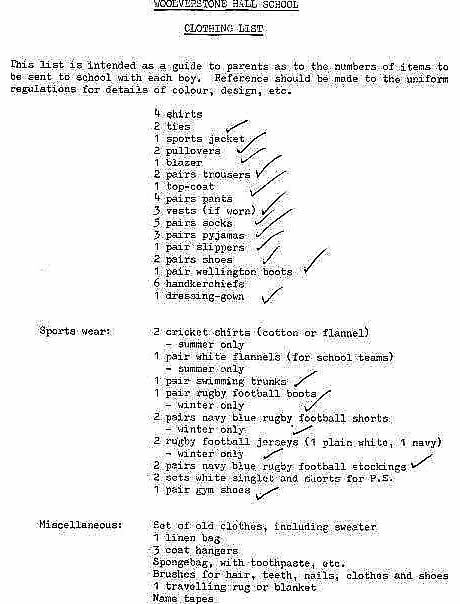 |
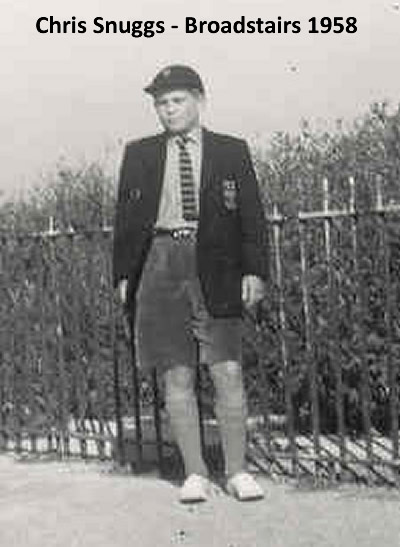 |
|||||
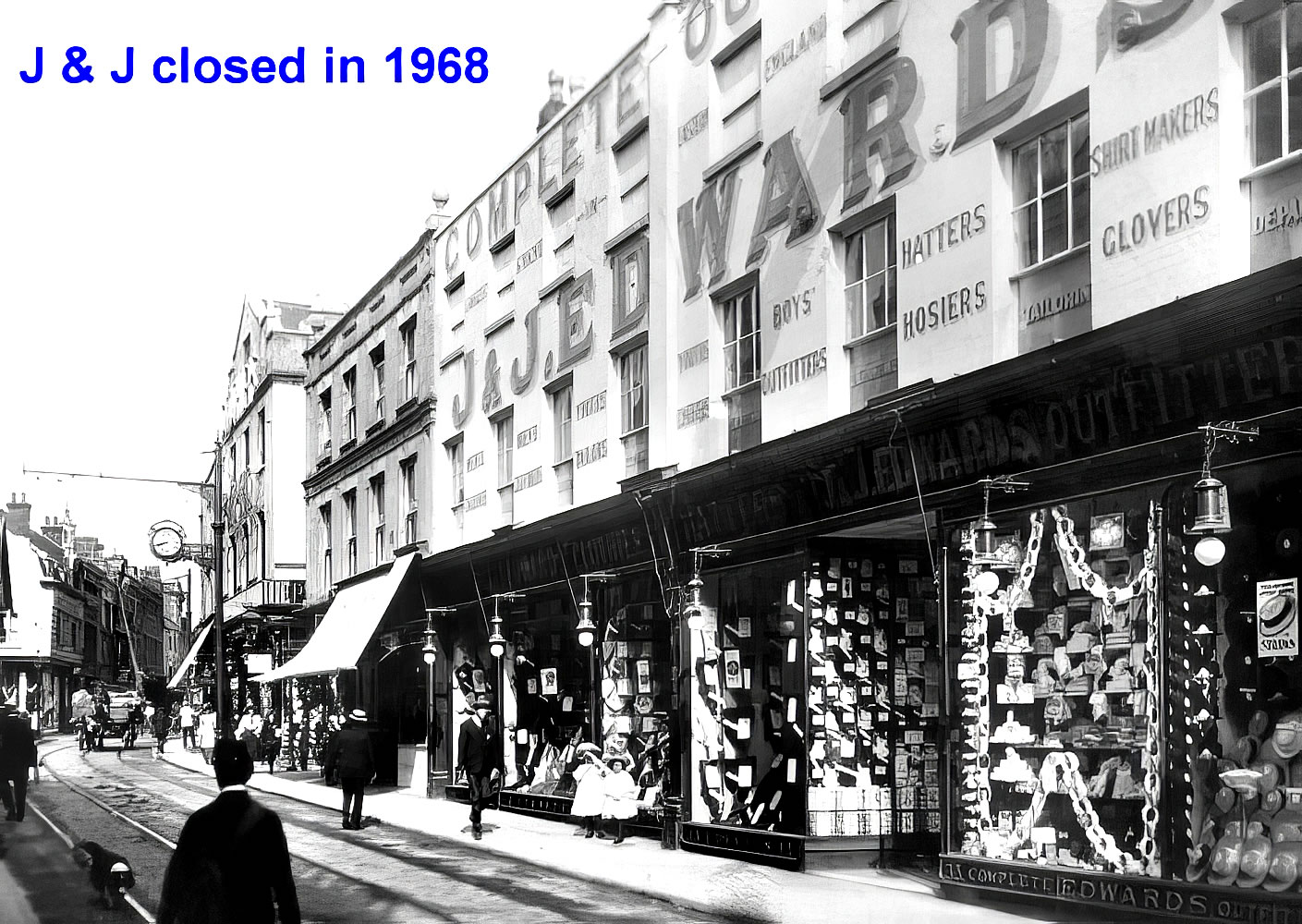 |
||||||

